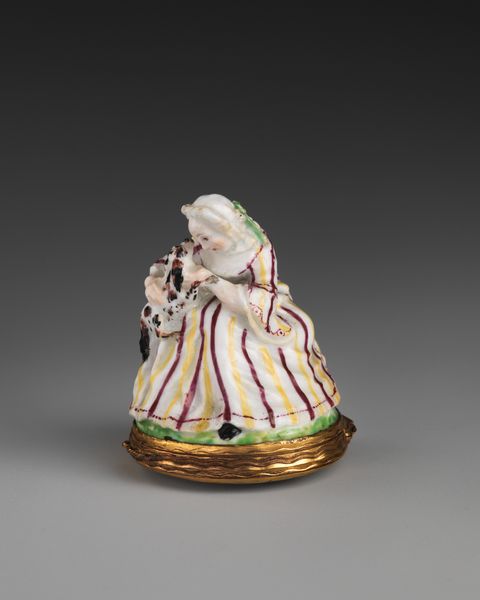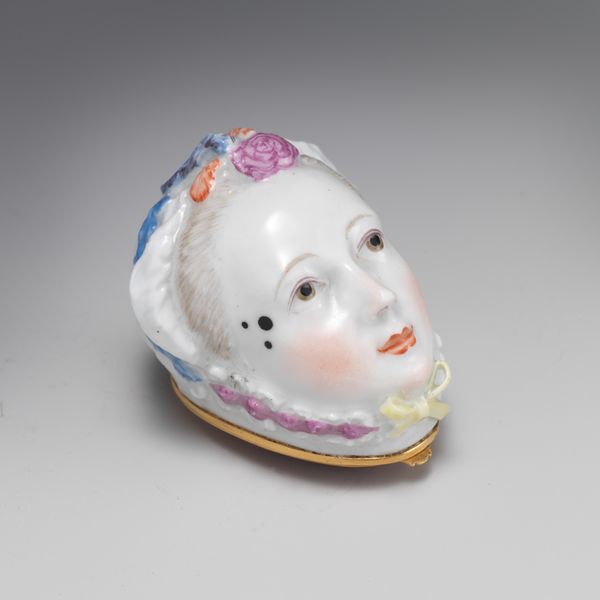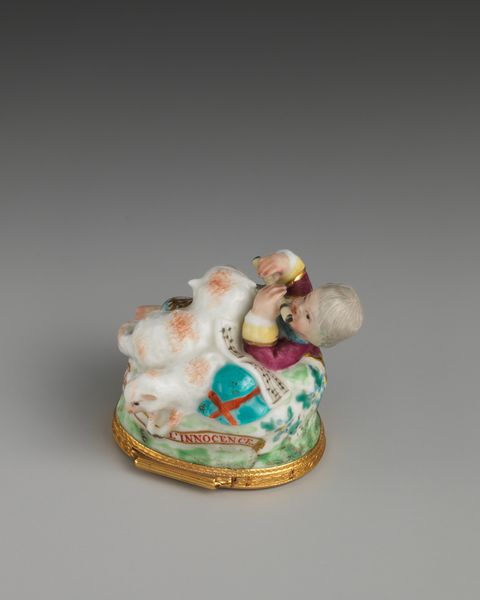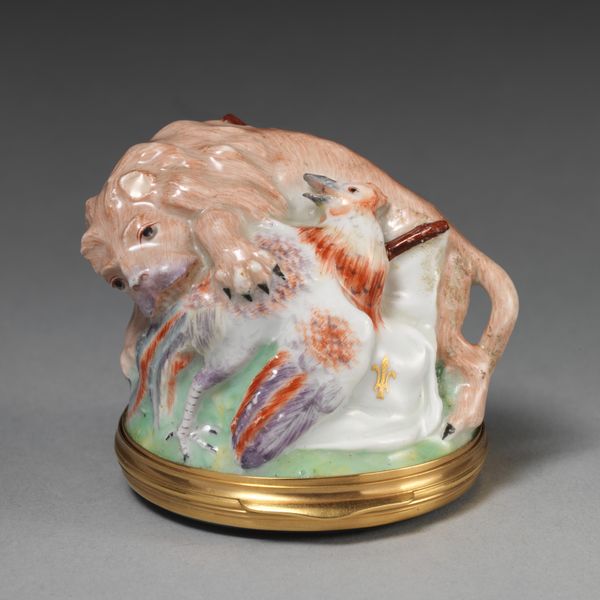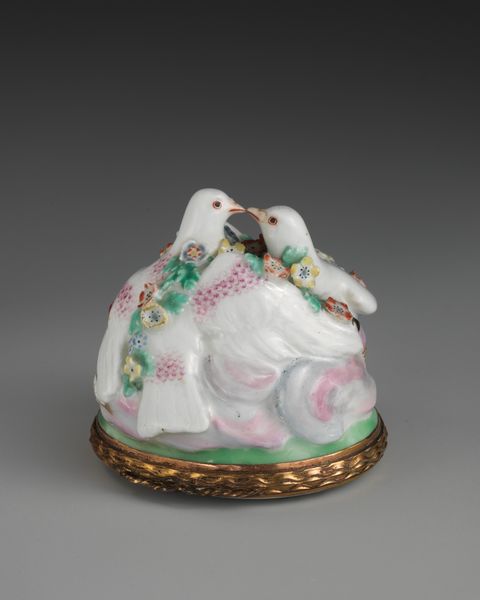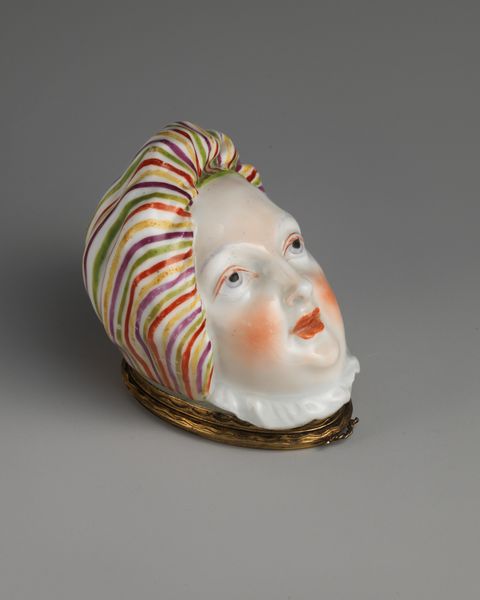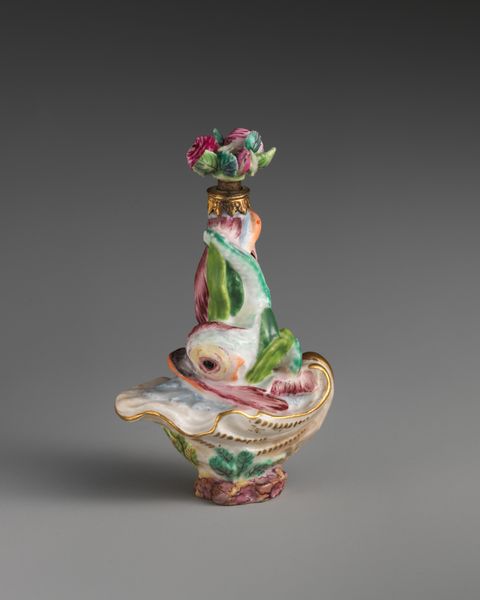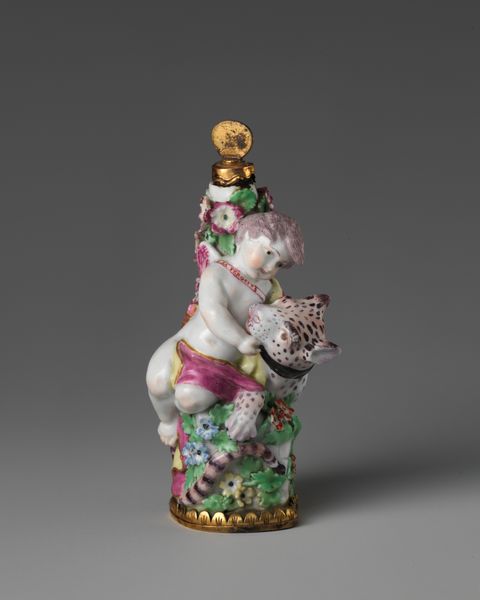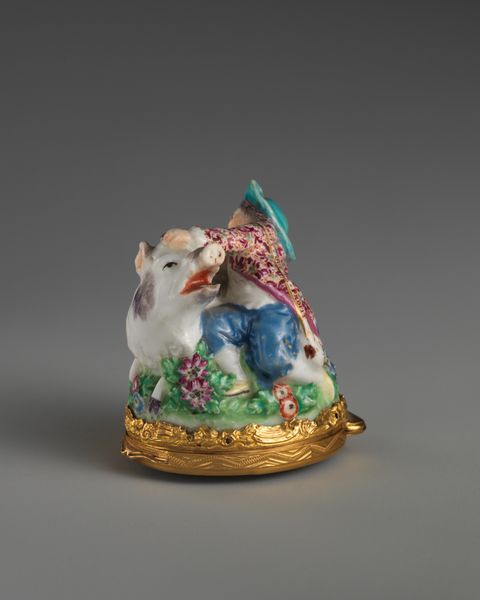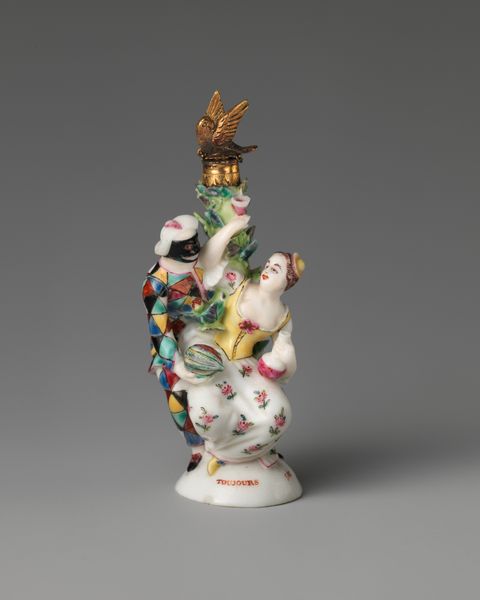
ceramic, porcelain, sculpture
#
animal
#
ceramic
#
porcelain
#
figuration
#
sculpture
#
decorative-art
#
rococo
Dimensions: 1 7/8 × 2 5/16 × 1 9/16 in. (4.8 × 5.8 × 4 cm)
Copyright: Public Domain
Curator: Here we have a "Snuffbox in the Form of an Armadillo," a delightful piece created at the Saint-Cloud factory between 1735 and 1755. The rococo style is evident in its playful design. Editor: My first impression? Whimsical and slightly unsettling. It’s an armadillo…sort of. The face is almost human, and the colorful decoration feels exuberant but somewhat forced. Curator: Precisely. The porcelain body reflects the intense competition among European factories to replicate the prized hard-paste porcelain from China. The Saint-Cloud factory was renowned for its soft-paste porcelain, a material requiring considerable skill to manipulate. Editor: I see that now – the translucency, the almost pearly surface. The silver mount is also well-crafted. The lines of the painted shell mimic feathers or foliage in such an interesting composition. But why an armadillo? What’s the connection to the fashion of snuff-taking and elite society? Curator: Snuffboxes were highly fashionable items among the upper classes. This one suggests the global reach of trade and collecting in the 18th century. Armadillos, exotic animals from the New World, were increasingly featured in European art and design, seen as novelties. This snuffbox then signifies status, worldly awareness, and refined taste. Editor: So the material itself signifies wealth, skill, and European aspirations of production dominance while the armadillo symbolizes access to rare goods and experiences brought through expanding trade networks. What was the function of such art objects, beyond merely containing tobacco? Curator: These snuffboxes became conversation pieces, emblems of their owners' sophisticated sensibilities, often displayed and exchanged among fashionable circles. They were tangible reminders of status. It also touches upon colonial exploitation – consider the labor needed to obtain resources. Editor: It is striking to think how objects such as this, beautiful as they are, also speak of labor and colonial networks. A final thought, though. I wonder if this strange hybrid form—the slightly anthropomorphic armadillo—speaks to anxieties or fantasies lurking beneath the veneer of sophistication. Curator: A provocative consideration to end with. Thank you for bringing this layer of depth to it.
Comments
No comments
Be the first to comment and join the conversation on the ultimate creative platform.
